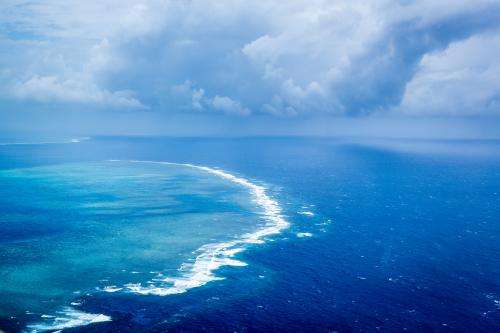Sea temperatures likely readable real-time with new model

Western Australian researchers believe they are first to develop a model for accurately estimating local water temperature in near real-time for marine protected areas (MPAs).
The model is more accurate than others because it allows for different seasonal patterns in water temperature.
The group used sea surface temperature (SST) data from the US National Oceanic and Atmospheric Administration's (NOAA) Coral Reef Watch (CRW) program and in situ temperature data from four WA MPAs to test the model.
The CRW provides marine managers and researchers with access to near real-time SST updates globally.
Department of Parks and Wildlife research scientist Kevin Bancroft says the model will help in understanding thermal anomalies on marine life.
Temperature model could indicate coral bleaching events
Mr Bancroft says extensive coral bleaching was a direct result of the high water temperatures during summer in 2010–11 and 2011–12.
"In the past we've noticed that when the CRW has issued a bleaching event, we've often found that there hasn't been a bleaching event," he says.
"Other times when they haven't alerted us, bleaching events have been recorded—that's because the water temperatures they're measuring are offshore.
"To correct this, we've looked at archival data where people have logged temperature regularly in the past and we've had our own loggers out in various MPAs as well."
Mr Bancroft says he now has a temperature model for various sites throughout WA's MPAs and would like to improve the spread of these models for other sites.
"At least if we get a bleaching event, we can go to NOAA, download their data, whack it in the model and come out with an estimated in situ water temperature for that particular site, and it will inform us on whether we need to put in some management strategy," he says.
Satellite sensors reading the ocean's surface temperature
NOAA uses a satellite sensor to measure infrared radiation of the ocean, and thus its temperature.
This virtual area of 50km by 50km pixels cannot include islands or anything that will interfere with the receptance value; this is why the data is typically from offshore.
Mr Bancroft says NOAA is developing a finer resolution sea surface temperature model using 5km by 5km pixels from their satellite data.
"This means we'll be able to refine the locations of virtual sites within and around MPAs," he says.
"Future directions would involve the automation of the process of providing near real-time data to marine park managers via a web-based tool, to enable better management decisions."
More information: Jaala Baldock, Kevin P. Bancroft, Matthew Williams, George Shedrawi, Stuart Field, "Accurately estimating local water temperature from remotely sensed satellite sea surface temperature: A near real-time monitoring tool for marine protected areas," Ocean & Coastal Management, Volume 96, August 2014, Pages 73-81, ISSN 0964-5691, dx.doi.org/10.1016/j.ocecoaman.2014.05.007.
Provided by Science Network WA



















